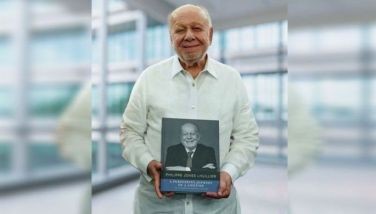Going Nuclear

I’ve mentioned here before that there is a looming energy crisis, and that the Russian invasion of Ukraine will exacerbate an already precarious energy situation.
Well, the conflict in Ukraine rages on and this already has had a far-reaching impact on global energy and the global food supply.
Dr. Faith Birol, executive director of the International Energy Agency, or IEA, wrote: “As well as causing a grave humanitarian crisis, Russia’s unprovoked invasion of Ukraine has had far-reaching impacts on the global energy system, disrupting supply and demand patterns and fracturing longstanding trading relationships.”
Energy experts say that an additional capacity of 43 gigawatts is needed by the year 2040. Our current energy mix is 47 percent coal, 22 percent natural gas, 24 percent renewable energy sources (hydro, geothermal, wind, and solar), and 6.2 percent oil. Existing power reserves stand at 23 gigawatts.
How to address the energy crisis then, as we cannot afford for it to get worse?
This brings nuclear energy to the fore.
Nuclear energy is a potential source that is cheap, clean, and most viable, but has escaped our sights for some time now. Perhaps now is the time to give it a reboot and a rethink.
Dr. Carlos Arcilla, the director of the Philippine Nuclear Research Institute (PNRI), encourages the use of nuclear power in the country’s energy mix, as this would also help in reducing consumers’ electric bills.
Though he is not against the use of solar and wind power, which are also cost-efficient sources of energy, Arcilla noted that there is a need for a backup system as the sun does not shine at night, of course, and there are always typhoons in this country that would disrupt the energy systems of these sources.
According to Dr. Arcilla, a nuclear power plant could store energy that would last for 18 months.

These facts were also echoed by Rep. Mark Cojuangco (incoming, of the Second District of Pangasinan) when he guested on Kontra Birada on DZRJ 810 AM — Voice of the Philippines — and Radyo Bandido TV, a program I hosted together with Atty. Karen Jimeno.
Rep. Mark has had 15 years of research and study into nuclear energy and has been one of the country’s foremost advocates for nuclear power.
According to Rep. Mark, it is both imperative and urgent that the Philippines considers nuclear energy, as we don’t have indigenous sources for coal and gas, which the bulk of power plants are using now, and that Malampaya is already running out.
If we recall, the Malampaya gas field provides for 30 percent of Luzon’s energy needs, which is 20 percent of the country’s needs in total.
Rep. Mark mentioned that though both wind and coal are viable, renewable energy sources, they are both intermittent. We would have to build parallel systems to back them up, and these would be very expensive in the medium to long term.
The final cost of these energy systems will be a multiplier of what people are saying of their projected cost, and this would most likely be passed on to the consumers.
Rep. Mark further said that nuclear is the most reliable energy. In the United States, nuclear energy has an average capacity factor of 92-plus percent, which means that power is available 100 percent of the time for 547 days PWRS and 100 percent of the time for over 730 days straight.
Nuclear energy eliminates the need for coal and gas, which are carbon emitting; thus it is cleaner for the environment.
I mentioned in our discussion that one argument being raised by those against nuclear power in the country is because we are in the so-called Pacific Ring of Fire, and that what happened in Fukushima, Japan, can happen to us. I asked Rep. Mark if this was a valid argument against nuclear energy.
Rep. Mark said that it is not a valid argument because nuclear power plants, like the Bataan Nuclear Power Plant (BNPP) and subsequent nuclear power plants in Japan, are built to withstand a strong earthquake.
According to Rep. Mark, a tsunami and not an earthquake was what caused the catastrophe at Fukushima.
In the case of Chernobyl, there was no containment, as the Russians were saving on costs. In the West, you cannot build a nuclear power plant without containment. We don’t build nuclear power plants that way (without containment), according to Rep. Mark.
Rep. Mark also mentioned that in a survey of the Department of Energy, more Filipinos wanted nuclear energy because of the high cost of electricity now.
No country can get rich without cheap energy like nuclear. That it is also clean energy is already a bonus.
We needed to start 10 years ago, Rep. Mark said. Every coal and gas plant that we build now postpones the time that they can be replaced with nuclear power.
Other countries are already embracing nuclear, especially under the new normal. Hopefully we don’t miss the boat.
Last July 2020, President Rodrigo Duterte signed Executive Order No. 116, which directs a study for the adoption of a national position on a nuclear energy program. Under the EO, the Nuclear Energy Program Inter-Agency Committee (NEP-IAC) was created with the energy secretary as chair and the secretary of the Department of Science and Technology as vice chair.
“The IAC will start crafting recommendations on integrating the nuclear energy (in the energy mix), its feasibility, how this would be done, etc.,” Arcilla said back then.
On the question of whether nuclear power plants were safe or not, Arcilla answered that “there are 450 nuclear power plants globally, 100 of which are in America. If it is unsafe, why would America have 100 nuclear power plants?”
Dr. Arcilla also confirmed that even if the President would agree to the suggestion of integrating nuclear power in the energy mix, it would take time before it could happen.
“Maybe about four to five years, because there’s a lot to be done and to be considered,” he said.
In February of this year 2022, President Duterte signed Executive Order No. 164, allowing the country to tap nuclear power as an alternative energy source, more than a year after an inter-agency body submitted its recommendation.
“The national government commits to the introduction of nuclear power energy into the state’s energy mix,” President Duterte said. “For the country to achieve its sustained growth targets, it must ensure that it has a reliable, secure, sustainable, quality and affordable electricity supply, including sufficient reserve to guarantee that there will be no disruptions in power supply.”
This is a step in the right direction and I thank and congratulate President Duterte, as well as Energy Secretary Al Cusi, for calling for and supporting a national nuclear energy program.
We hope the incoming administration will take heed and follow the lead taken by its predecessor.
- Latest





























